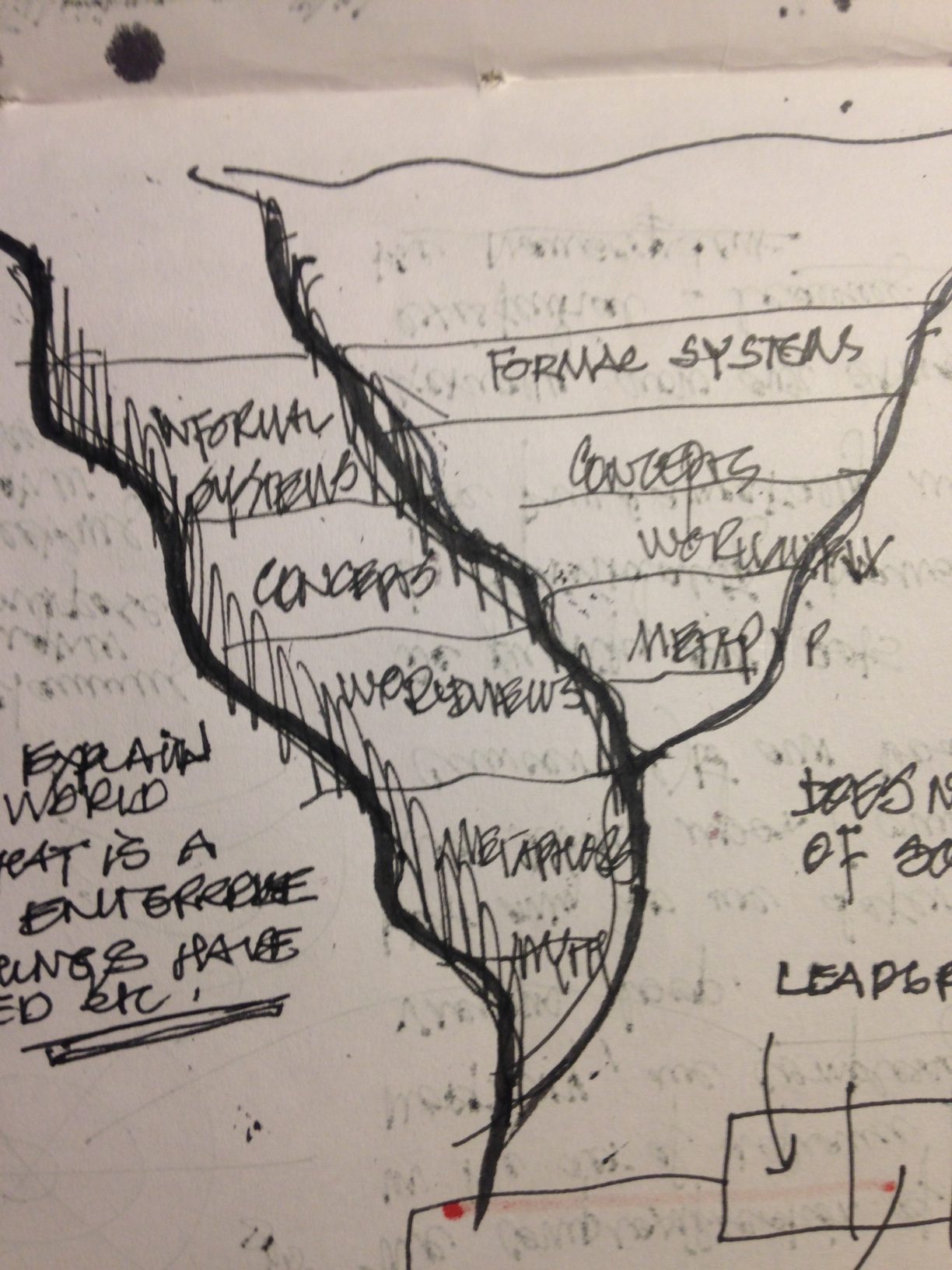Of Degrees of Freedom and dead Cats…
Using the Schrödinger’s Box lens, we are now mostly populating the World with dead cats, and they are killing us slowly, while entrancing us with their phony, mysterious enigmatic Mona Lisa smiles. (This then we believe is wonderland).
What we put out there in the name of progress and development, mostly, drastically shrinks probability spaces, rather than expand them — reducing broader, non-local degrees of freedom for life and world-making. We are also a topological disaster already, and in the making.
Technological progress and the ‘genius’ of its application in all domains, eagerly accelerates the making of new cats — those that will supposedly live longer, amuse you and not die on you in a hurry, or just need ever larger litter boxes.
The ugliness of the new we birth, lies not in conventional aesthetics, for a building might seem pretty when seen in isolation, as might any shiny gizmo (Musk’s cars), for example, but in the other dimensions of aesthetics (Quality as in Pirsig’s book — Zen and the Art of Motorcycle Maintenance) of living — Material/Real or Virtual/Digital.
We have over time learned to expand the notion of Space — from what just used to be Material and Energy, we now have Information and Knowledge, and everything listed above, penetrate and disturb the Social, Political and Cultural at all layers of society.
Wonder what spaces come next, though when we have exhausted spaces for human worlds on the terrestrial, there is always Mars, and Musk perhaps anticipates that.
Zuckerberg just gave up on Meta — that space was not viable, but I don’t believe he will rest. The Social spaces he created are a schism-producing quagmire, but that is the nature of things — Eyeballs get Glaucoma, and glasses don’t quite work.
In the new economics, spaces we reduce in Nature and Environment and elsewhere are not counted — nor is there particular attention to temporal spaces in the large, past or future — heritage dismissed, futures post-human. When one space runs into constraints, all we need to do is to shift our desires for more degrees of freedom to shiny emerging spaces.
We are in a rush, remember, and the settlers of the new spaces are in a hurry to extract as quickly as possible, exploit the temporary surges in Value and make quick exits (It is in the language of entrepreneurs and the V Capitalists).
The rest of us are left a stock market to speculate which cats should make it using our collective wisdom — if all goes well, we will retire wealthy and purr.
As we move forward, new Spaces and their activities of their settling, dominate economies as old ones recede in relative importance, as these new ones demand infrastructures (think Crypto) and services for their new ecosystems.
These new landscapes are highly fertile grounds for the dysfunctional. Their economies are and will increase, alongside those we need for our world-making.
Ever more will be spent on winning elections for power for example, but how possibly could you ignore the economies of fraud, corruption and general dysfunction in the whole that you must now ‘govern’. Fear not for we will, for example, spend more on Security and Intrusion Detection — those too are collateral economies you just might not have needed otherwise.
Know also that these dark economies are much larger and lucrative than the sops citizens gather from their patrons’ largesse. We do not see these darknesses till the banks collapse, until there is an environmental disaster, or a pandemic. We congratulate ourselves on our resilience and recovery, and resume BAU after the crises.
That there is our traffic congestion, that is failed public health and education or economies — that is anxiety, fear, hopelessness and despondence. That is how all our lives are Occupied, right beneath our noses, and with our innocuous seeming collusion too, and inexorably we cannot take these back — we watch mutely, and mostly deluded.
So then, dead or barely-alive cats are clogging up our Public Spaces and Civic Life, and we only need to open the Boxes of our minds to see them.
Only when we start recognizing dying cats foisted on us as new and progress, or completely reject the allure of those already dead could we take these spaces back for an expansive, alive and enduringly flourishing future for all mankind.
(I am reminded of Vonnegut, not sure which book — The Chinese have become so small that they are particulate and suspended, and if I remember right, people are turning green breathing them in, but do not know why).
Designing For Expanding
Degrees Of Freedom
Flourishing

